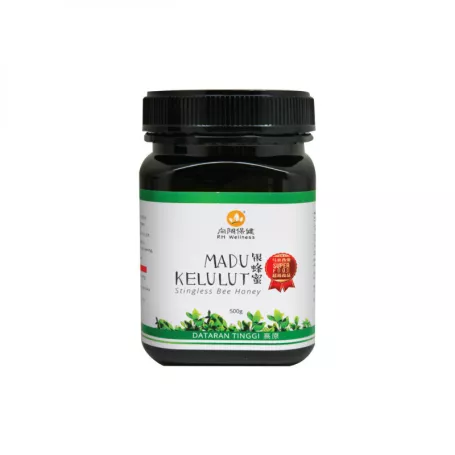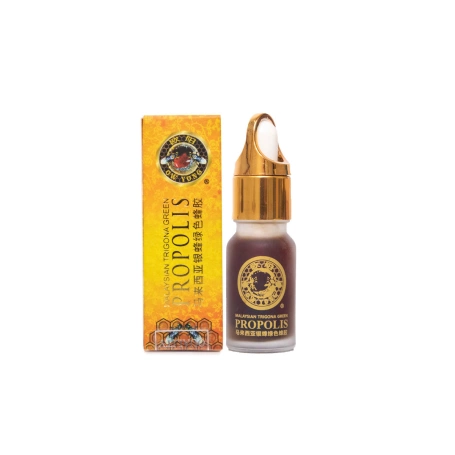Why Is Kelulut Honey So Expensive? | Bai Zi Gui

Kelulut honey, derived from stingless bees, is prized for its unique properties and high cost. Unlike regular honey, Kelulut honey has a distinct tangy flavor, a more liquid consistency, and a rich nutritional profile. But what exactly makes this honey so special and expensive? This article explores the various factors contributing to the high cost of Kelulut honey, including its production process, nutritional and medicinal benefits, and market demand.
The Unique Value of Kelulut Honey
Kelulut honey is valued for its distinct characteristics, setting it apart from regular honey. Produced by stingless bees, this honey is less sweet and has a unique tangy flavor. Its liquid consistency, compared to the thicker regular honey, makes it a versatile ingredient in both culinary and medicinal applications. The unique production process, combined with its health benefits, adds to its value.
The Production Process of Kelulut Honey
Stingless Bees
Stingless bees, specifically from the Meliponini tribe, are the primary producers of Kelulut honey. These bees are smaller than regular honeybees and lack stingers, which makes them easier to manage and less aggressive. However, their smaller size also means they produce significantly less honey. A typical stingless bee colony produces only a few liters of honey per year, which contributes to its high cost. These bees build their nests in hollow tree trunks or man-made hives, which need to be carefully maintained to ensure the bees’ health and productivity.
Harvesting Techniques
Harvesting Kelulut honey is a meticulous and labor-intensive process. Unlike traditional honey harvesting, which often involves large-scale extraction methods, Kelulut honey is collected manually. Beekeepers must carefully extract honey from the small hives without damaging them or disturbing the bee colony. This process involves opening the hives, which are usually made of wood or other natural materials, and gently removing the honey-filled resin pots created by the bees. The honey is then strained to remove impurities, ensuring a pure final product. This careful handling is necessary to maintain the quality and integrity of the honey but also requires significant time and effort.
Time and Effort
The production of Kelulut honey is a time-consuming endeavor. It takes stingless bees much longer to produce honey compared to regular honeybees. On average, a single colony might produce only a few liters of honey per year. This slow production rate, combined with the extensive care and effort required to maintain the hives and harvest the honey, significantly impacts the price. Additionally, stingless bees are sensitive to environmental changes, requiring beekeepers to provide a stable and suitable habitat, which adds to the overall cost of production.
The Nutritional and Medicinal Benefits of Kelulut Honey
Rich Nutritional Profile
Kelulut honey is renowned for its rich nutritional content. It is packed with essential vitamins, minerals, and antioxidants. The honey contains higher levels of phenolic acids and flavonoids compared to regular honey, which are compounds known for their health-promoting properties. These antioxidants help combat oxidative stress in the body, reducing the risk of chronic diseases such as heart disease and cancer. Additionally, Kelulut honey provides essential nutrients like vitamin C, magnesium, and calcium, contributing to overall health and well-being.
Medicinal Properties
The medicinal benefits of Kelulut honey are significant. Traditionally, it has been used for its anti-inflammatory, antimicrobial, and wound-healing properties. Studies have shown that Kelulut honey can help in treating infections, promoting digestive health, and supporting the immune system. Its lower glycemic index makes it a suitable sweetener for people with diabetes, as it causes a slower rise in blood sugar levels. Moreover, the antimicrobial properties of Kelulut honey make it effective in treating wounds and burns, preventing infections, and speeding up the healing process.
Market Demand and Rarity
The rarity and high demand for Kelulut honey also drive up its price. As more people become aware of its benefits, the demand increases, but the supply remains limited due to the slow production process and the specific conditions required for its harvest. Kelulut honey is often considered a premium product, sought after by health-conscious consumers and those looking for natural remedies. This high demand, coupled with limited supply, results in higher prices.
Research and Studies
Numerous studies have highlighted the benefits of Kelulut honey. Research indicates its potential in managing diabetes due to its lower glycemic index compared to regular honey. Other studies have explored its antioxidant properties and its role in preventing certain diseases. For instance, a study published in the Journal of Agricultural and Food Chemistry found that Kelulut honey has higher antioxidant activity compared to other types of honey, which can help reduce oxidative stress and inflammation in the body. Another study in the Journal of Medicinal Food showed that Kelulut honey has antimicrobial properties, making it effective against various bacteria and fungi.
FAQs
1. What makes Kelulut honey different from regular honey?
Kelulut honey differs from regular honey in several ways. It is produced by stingless bees, has a unique tangy flavor, and a more liquid consistency. Additionally, it contains higher levels of antioxidants and other beneficial compounds, making it more nutritious and beneficial for health.
2. Can Kelulut honey be used in cooking and baking?
Yes, Kelulut honey can be used in cooking and baking. Its unique flavor can add a distinct taste to dishes and desserts. However, due to its higher cost, it might be best reserved for special recipes where its unique qualities can be fully appreciated.
3. What is the recommended daily intake of Kelulut honey?
While there is no specific recommended daily intake, consuming one to two tablespoons of Kelulut honey daily can be beneficial for health. It provides essential nutrients and antioxidants that can support overall well-being.
4. Why is Kelulut Honey so Expensive Compared to Regular Honey?
Kelulut honey is more expensive due to the labor-intensive harvesting process, the slow production rate of stingless bees, and the high demand coupled with limited supply. Additionally, the unique nutritional and medicinal benefits of Kelulut honey add to its value and cost.
5. Are there different grades of Kelulut Honey?
Yes, Kelulut honey can vary in quality, influenced by factors such as the bee species, the environment, and the harvesting methods. Higher grades of Kelulut honey typically have a more robust nutritional profile and better flavor, making them more sought after and consequently more expensive.
Conclusion
Kelulut honey's high price is justified by its unique production process, rich nutritional content, and significant health benefits. Its rarity and the meticulous effort required in its production further add to its value. As research continues to unveil its potential, the demand for this precious honey is likely to grow, solidifying its status as a premium natural product. Understanding the complexities of its production and the multitude of benefits it offers helps appreciate why Kelulut honey commands such a high price in the market.

 Bahasa melayu
Bahasa melayu 中文
中文

























